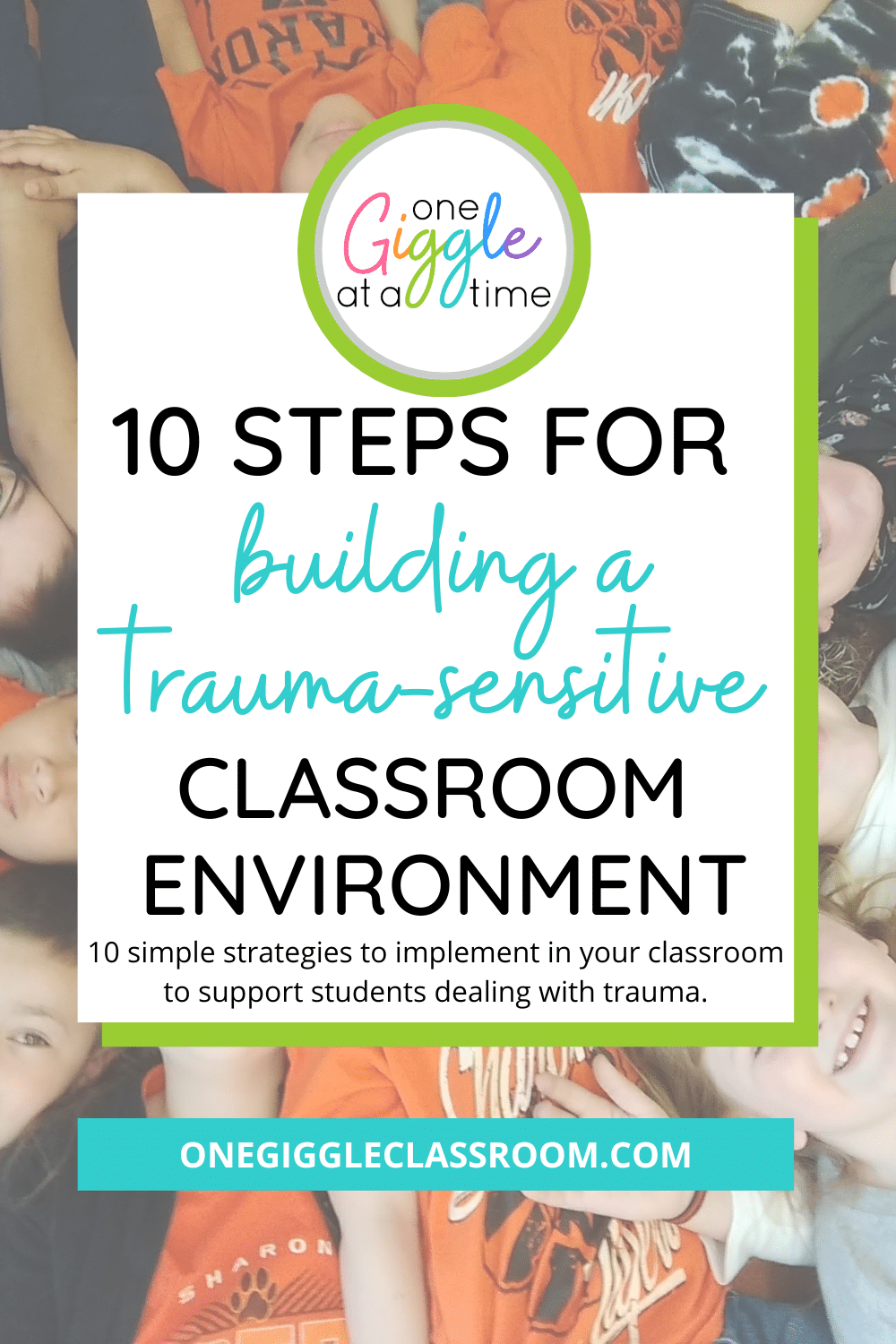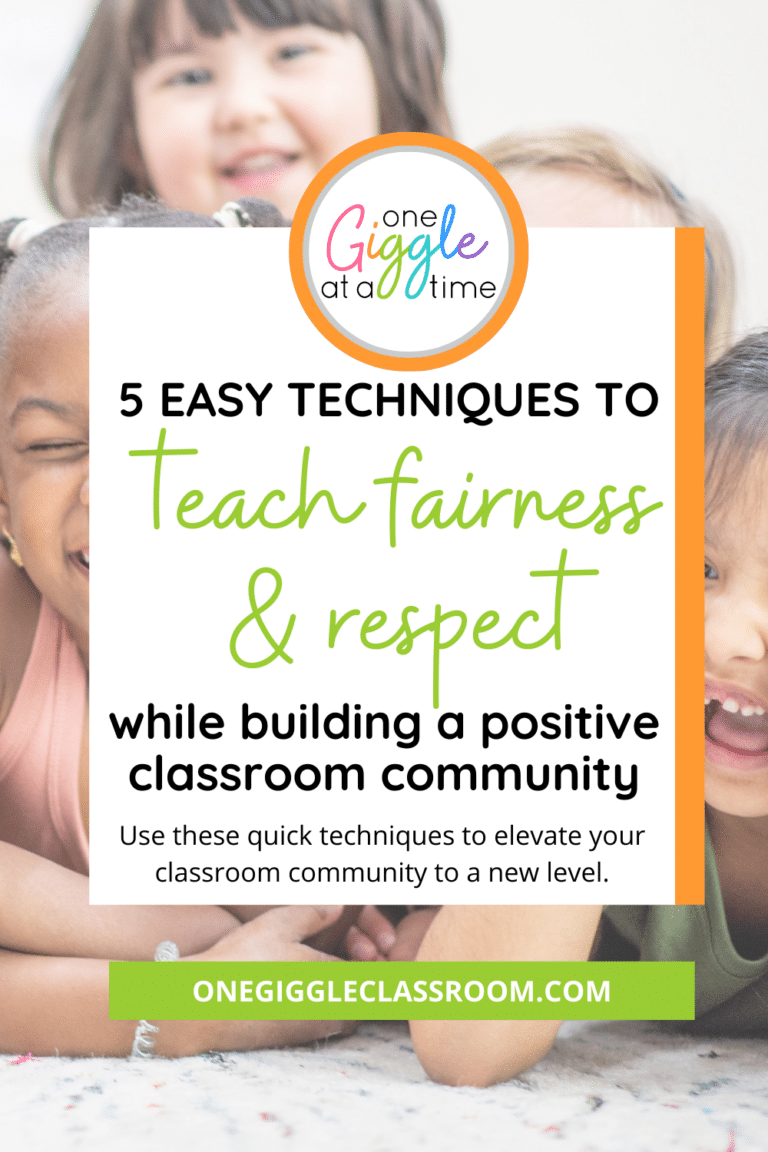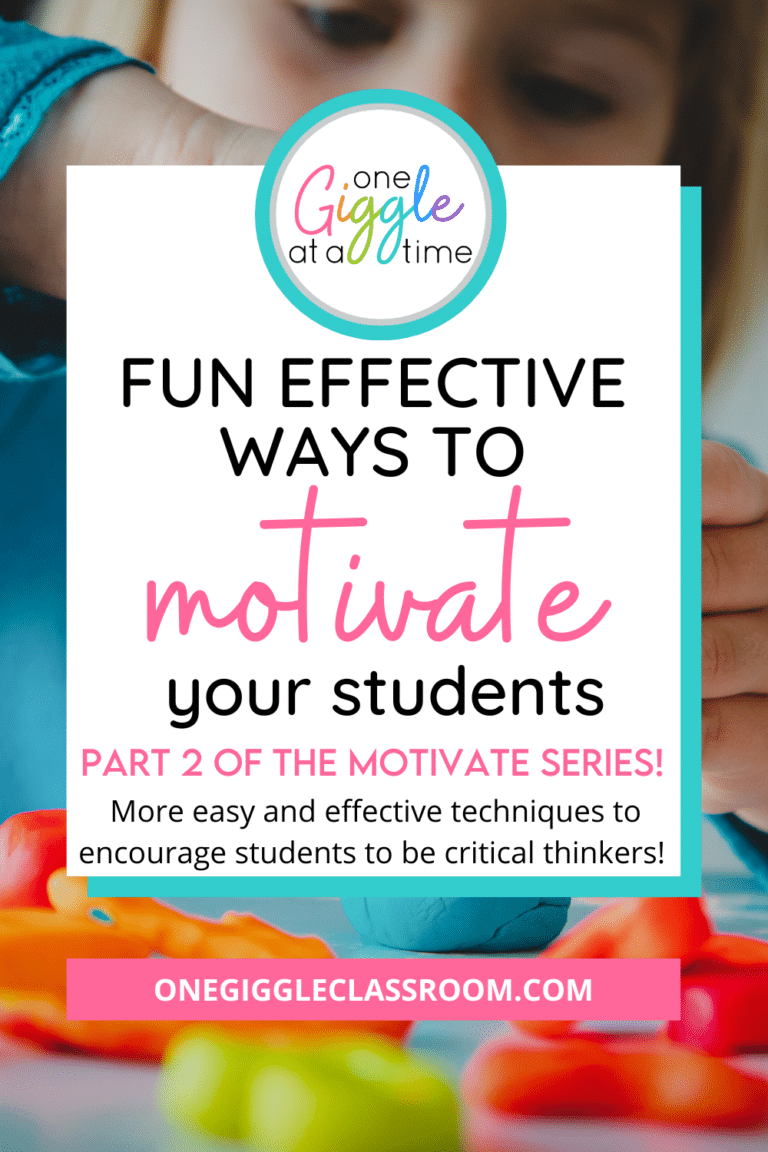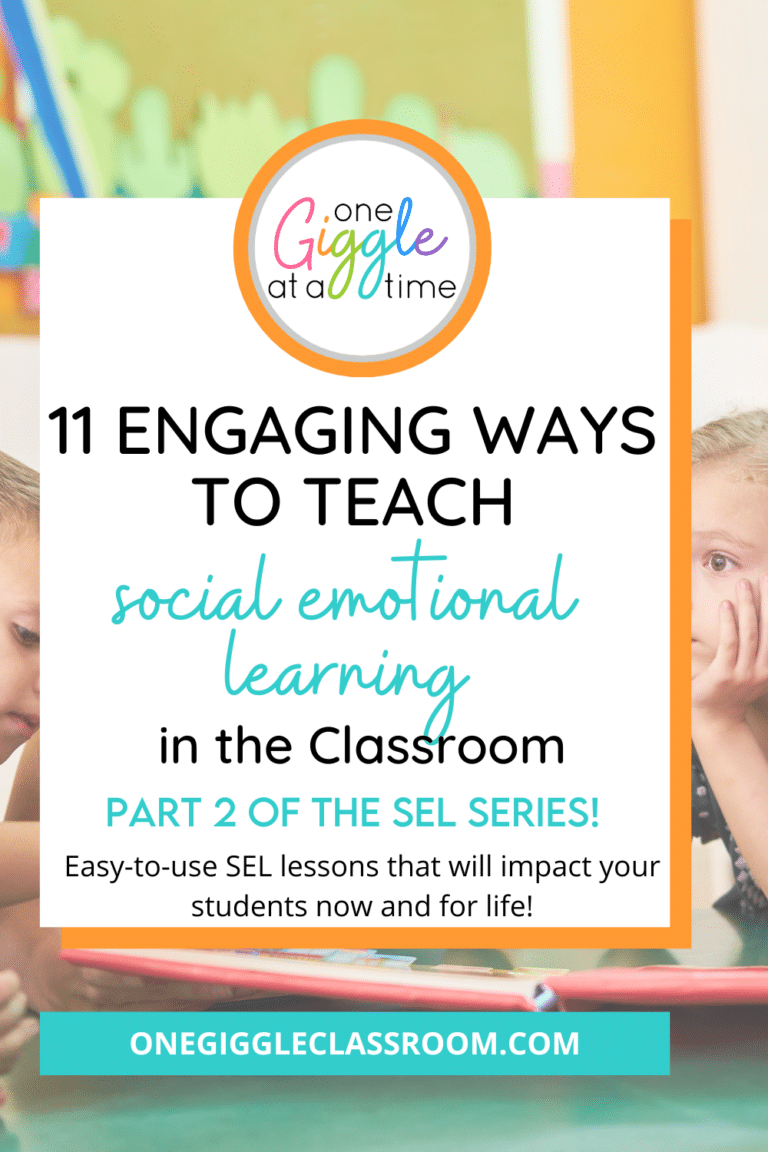
10 PRACTICAL Steps for Building a Trauma-Sensitive Classroom Environment
Share This:

As an elementary teacher, you play a huge role in the emotional well-being of your students. For those who have experienced trauma, the classroom can be a safe place where they experience support and understanding. Use these 10 steps to build a trauma-sensitive classroom that fosters safety, connection, and optimal learning for your elementary students!
Statistics about Childhood Trauma
Trauma is an emotional response to any event that threatens or causes harm, usually things that cause a lot of stress on a person. The amount of stress that a child can process is different than what an adult can. According to a study completed by the National Institutes of Health in 2015, 34% of children have experienced one OR MORE traumatic events.
The most frequent types of traumatic events that children experience include witnessing or knowing of a family member being arrested or deported, witnessing physical violence or violence in their community, or personally experiencing physical violence.
Other types of childhood traumas:
- Witnessing or being in a serious accident
- Someone very close to the child being sick or hurt
- Being separated from a caregiver
- Experiencing the death of a close person
- Being attacked by an animal
- Threats of stealing or violence
- Extreme poverty or homelessness
- Experiencing a natural disaster
Common Signs of Trauma in Children
Approximately 75% of those children experienced moderate or higher levels of posttraumatic stress symptoms as a result.
Some of these symptoms can include:
- Sudden drops in academic performance
- New bullying behaviors
- Decreased focus
- New food aversions or desire to eat much more than usual
- Falling asleep in class
Being aware of these signs is so helpful as a teacher. Don’t hesitate to reach out to your school counselor for additional support!
Creating a Trauma-Sensitive Classroom
Once you are aware of these traumas and their signs, you can begin to build a classroom where all of your students can feel safe and truly blossom academically, socially, and emotionally!
Follow these 10 steps to easily create a trauma-sensitive classroom environment:
1. Establish a Safe and Predictable Environment
First thing first– create a daily routine with super clear expectations! When students know what to expect, they can feel secure. Predictability is key, especially on the days when unexpected changes happen like a school assembly or substitute teacher.


Prepare your students in advance when possible. Use resources like the substitute teacher social skills story to help maintain a sense of stability for students.
2. Build Positive Relationships
Greet your students warmly and show genuine interest in what is going on in their lives. This can make a world of difference for kids who have experienced trauma!
Foster positive one-on-one interactions with these students and special adults. Utilize other staff members in the school when needed. Anyone who has made a special connection with a student can be a good choice– the art teacher, librarian, kindergarten teacher, or registrar. There’s no limit to positive relationships!
3. Teach Self-Regulation Skills
Incorporate activities that teach self-regulation like deep breathing, yoga, or mindfulness exercises. These techniques help empower your students to manage their stress and emotions effectively.
This emotional regulation bundle has everything you need for this important step in creating a trauma-sensitive classroom!
4. Provide Visual Supports
Visual schedules, charts, and cues help students understand and anticipate daily activities. They also enhance communication, help students know what to expect throughout the day, and reduce anxiety.
Set your students up for success to work independently and complete the tasks they are given with these FREE visual supports!
5. Offer Flexible Seating and Movement Breaks
Flexibility in seating and incorporating movement breaks into your daily schedule provides outlets for physical activity. These extra opportunities for movement help students release excess energy and improve focus.
6. Use Trauma-Informed Language
Mindful language is crucial in trauma-sensitive classrooms! Avoid shaming or punitive language and instead focus on positive reinforcement.
Provide students with clear and simple directions that encourage an added sense of security.
7. Promote a Sense of Ownership
Encourage students to take ownership of their learning environment by contributing to classroom rules, decorating the classroom, and choosing activities.
These choices will foster a sense of control and empowerment that children who have experienced trauma often lack.
8. Offer Sensory Supports
Recognize and address sensory needs in your students. Provide sensory-friendly tools and spaces such as bouncy bands on chair legs, sensory breaks, and fidget items to help meet these needs.
9. Provide Emotional Outlets
Incorporate activities like journaling, drawing, and personal emotions check-ins to allow students to express their emotions throughout the day as needed. By normalizing discussions about feelings, students can more confidently express and manage their feelings in your classroom and later in life!
Encourage students to share their worries with you in a classroom worry jar. Find everything you need to create this jar and so many other great ideas in the emotional regulation bundle.
*Read this post on feelings for even more ideas to teach students about their emotions!
10. Educate School Staff
And finally, take your trauma-sensitive environment beyond your classroom! Talk to your administration about offering professional development opportunities about childhood trauma so that all of the teachers and staff at your school are trained in trauma-informed practices.
Creating a trauma-sensitive classroom environment is an ongoing process that will require adaptability and getting to know each of your students on a deeply personal level. Collaboration with caregivers and other school staff will help you support all students well.

Implementing these 10 steps will help you not only create a classroom that’s sensitive to trauma but also cultivate a space that nurtures each student so that they can thrive emotionally and academically! Your dedication to creating a trauma-sensitive classroom environment for your students is an investment in the success of the next generation! So, thank you!
Let me know if you have any questions about anything you see here. Don’t forget to pin this post to refer to it later!

Reference:
Gonzalez, A., Monzon, N., Solis, D., Jaycox, L., & Langley, A. K. (2016). Trauma exposure in elementary school children: Description of screening procedures, level of exposure, and posttraumatic stress symptoms. School Mental Health, 8(1), 77. https://doi.org/10.1007/s12310-015-9167-7
Other posts you may enjoy:
How to Easily Accommodate Students with Severe Food Allergies into Your Classroom Community
Successful Strategies How To Improve Student Behavior at Assemblies
Most Important Classroom Routines and Procedures
MAKE MORNING ROUTINES IN YOUR CLASSROOM FUN AND ENGAGING WITH THESE
Free Morning Meeting Songs & Greetings
The perfect way to get students energized and ready to go in the mornings!


Diane Romo
Thank you for being here! I love sharing ideas with other teachers! If you are looking to enhance your teaching and build a positive classroom community, you have come to the right place!




















